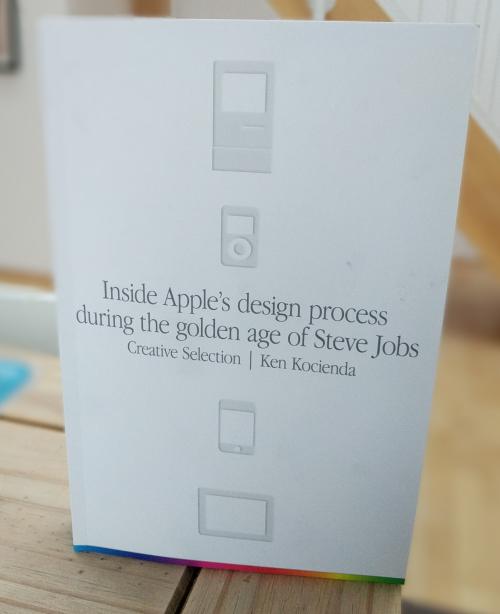Inside Apple's design process
Myths and patterns of innovation

I stumbled upon this book written by Ken Kocienda recently. And it seemed like a great chance to understand a bit more about Apple’s secret sauce, especially as Apple is notoriously secretive abouts its internals. So I decided to buy the book (despite the fact that the paperback version has one of the ugliest book covers in history - which is kind of funny as one would expect exactly the opposite from something that talks about Apple).
Ken’s key conclusions
Ken lists seven key ingredients that make Apple’s design process so unique and which he claims are at the core of Apple’s success:
- Inspiration: Aiming for big ideas and trying to imagine what could be possible
- Collaboration: An focused and productive atmosphere of working together
- Craft: Always striving to be better
- Diligence: Never resorting to shortcuts or half baked solutions
- Decisiveness: Making tough choices and refusing to delay or procrastinate
- Taste: Creating something that’s pleasing as a whole
- Empathy: Building things that fits into the lives of the customers
Sounds a bit generic?
Sounds a bit generic to you? That’s what I thought as well. The first three items could be on the “values” list of any company and do not seem to be very original to me. What stands out for me are the last two points. Ken explains in great length how Apple put huge emphasis on product demos during development. It almost sounds like nothing had ever been released unless Steve himself got a demo and gave his blessing. And basically every development activity always seemed to be directed towards the “demo”: the decisive moment when Steve or other leaders in the organization would review the current iteration of whatever was built and cast their judgement. Almost like the consultation of an oracle.
What’s so special about this gets more clear when we compare this with other approaches to product development: usually you would take those early prototypes and shop them around with your users for feedback. Taking this to the extremes, Google is said to basically run A/B tests on every aspect of the product, even to determine the right shade of blue for a particular button on their website.
“A/B tests might be useful in finding a color that will get people to click a link more often, but it can’t produce a product that feels like a pleasing, integrated whole.”
So these demo sessions seem to work for Apple as a feedback channel, but they are hierarchical and the result is determined much more by Steve’s choices and taste than anything else. The focus on these demos has shaped the culture in a very strong fashion, making those points of “Taste” and “Empathy” real differentiators for Apple.
“A properly judged mixture of taste and empathy is the secret formula for making products that are intuitive, easy to use, and easy to live with.”
So what’s the essence?
My takeaway is, that the relentless focus on product demos, and the feedback-loop they constituted, was an absolute essential element to shape Apple products and the apple culture in a way that turned out the excellent products we all know. Including taste, empathy and the liberal arts into this process, together with an uncompromising leader seems to make this mix unique and very different from the product development processes of other companies. So how important was Steve Jobs for all of this? Ken gives him a lot of credit for his ultimate product decisions and notes, unsurprisingly: “After Steve died, the Apple software development culture started to change.”
What else is in the book?
Ken describes in great length how the development of the Safari web browser and the development of the first touch screen keyboard came about. So if you are in engineering or product development, it’s definitely worth a read to get some great first-hand views on how this worked.
It gets also clear, that even at Apple success is rooted in hard work rather than magic and pixie dust. Ken quotes Edison, who said:
“None of my inventions came by accident. I saw a worthwhile need to be met and I make a trial after trial until it comes. What it boils down to is one percent inspiration and 99 percent perspiration.”




Share this post
Twitter
Google+
Facebook
Reddit
LinkedIn
StumbleUpon
Pinterest
Email